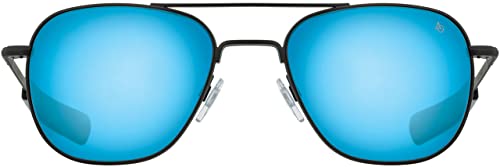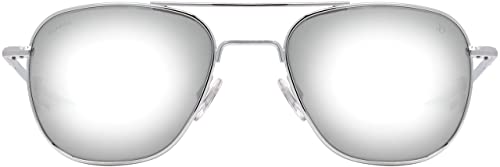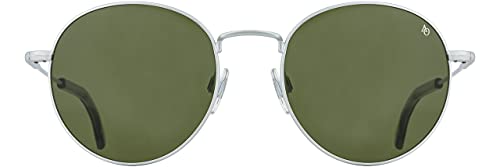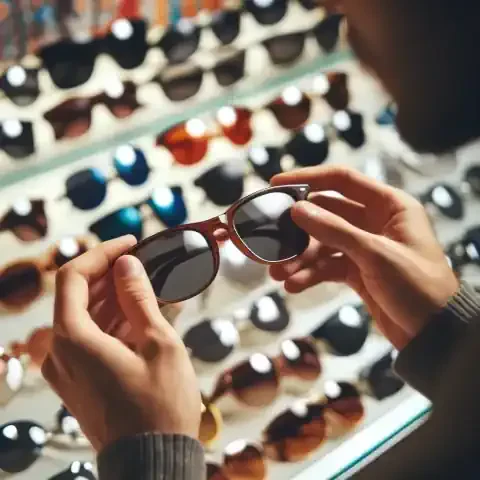Introduction
Sunglasses have long been synonymous with style and fashion. From classic aviators to trendy oversized frames, they adorn the faces of celebrities, influencers, and everyday individuals alike, serving as a symbol of personal expression and sartorial flair. However, beyond their role as a mere fashion accessory, sunglasses encompass a realm of functionality that extends far beyond aesthetics alone. In exploring sunglasses as more than just a fashion statement, it becomes evident that they play a crucial role in safeguarding eye health, enhancing visual performance, and shaping social interactions.
The allure of sunglasses as a fashion statement traces back centuries, with historical accounts of their usage dating back to ancient civilizations such as the Inuits and Romans. However, it was not until the 20th century that sunglasses began to emerge as a prominent fashion accessory, propelled by iconic figures like Audrey Hepburn in "Breakfast at Tiffany's" and James Dean in "Rebel Without a Cause," who helped solidify their status as a must-have item for the style-conscious individual.
Yet, as sunglasses evolved from functional tools to fashion staples, their utility in protecting the eyes from harmful ultraviolet (UV) radiation remained a critical aspect often overlooked in favor of design and brand appeal. The importance of UV protection cannot be overstated, as prolonged exposure to UV rays can lead to a myriad of eye conditions, including cataracts, macular degeneration, and even certain types of eye cancer. Therefore, while selecting sunglasses based on their aesthetic appeal is undoubtedly important, prioritizing their ability to provide adequate UV protection is equally paramount.
Moreover, beyond shielding the eyes from UV radiation, sunglasses offer a host of additional benefits that contribute to both eye health and overall well-being. By reducing glare and minimizing eye strain, they enhance visual comfort, particularly in bright outdoor settings or when engaging in activities such as driving or sports. Polarized lenses, in particular, have gained popularity for their ability to effectively block out glare, making them a preferred choice for individuals seeking optimal visual clarity and comfort.
Furthermore, the advent of prescription sunglasses has revolutionized the eyewear industry, catering to the needs of those requiring vision correction while simultaneously offering UV protection and style. This innovation has not only democratized access to functional eyewear but has also empowered individuals to prioritize both their eye health and personal style preferences without compromise.
In essence, sunglasses are far more than a mere fashion statement; they are a versatile tool that combines style with functionality, protecting our eyes from harm, enhancing our visual experiences, and shaping the way we interact with the world around us. As we delve deeper into the multifaceted role of sunglasses, it becomes apparent that their significance extends beyond the realm of fashion, permeating various aspects of our daily lives and contributing to our overall health and well-being.
Historical Evolution of Sunglasses
Sunglasses, in their various forms, have traversed through the annals of time, evolving from rudimentary eye shields to sophisticated fashion accessories. The journey of sunglasses is intertwined with the history of human civilization, reflecting cultural, technological, and societal shifts over millennia.
Origins of Sunglasses in Ancient Civilizations
The origins of sunglasses can be traced back to ancient civilizations, where early iterations served primarily utilitarian purposes rather than fashion statements. One of the earliest recorded instances of sunglasses dates back to prehistoric times, with the Inuit people of the Arctic region crafting snow goggles from materials such as bone, wood, and ivory. These goggles, designed to shield the eyes from the glare of sun reflecting off snow and ice, marked the rudimentary beginnings of eyewear designed for protection against environmental elements.
Similarly, the ancient Chinese are credited with the invention of sunglasses around the 12th century, using lenses made from smoky quartz to shield the eyes from the sun's glare. These early Chinese sunglasses, known as "smoke-colored glasses," were primarily worn by judges in courtrooms to conceal their facial expressions, thus adding a layer of mystique and authority to their appearance.
Evolution of Sunglasses Design and Functionality
The evolution of sunglasses gained momentum during the 18th century with the introduction of tinted lenses, marking a significant departure from their purely utilitarian origins. In the late 1700s, James Ayscough, an English optician, experimented with tinted lenses to correct vision impairments, laying the groundwork for the integration of corrective lenses into sunglasses in the centuries to come.
The 20th century witnessed a paradigm shift in the perception of sunglasses, propelled by advancements in manufacturing techniques, pop culture influences, and changing societal norms. Hollywood played a pivotal role in popularizing sunglasses as a fashion accessory, with iconic figures such as Marlon Brando, Marilyn Monroe, and Audrey Hepburn sporting sunglasses in films, elevating them to coveted style staples.
Shift from Mere Eye Protection to a Combination of Fashion and Function
As sunglasses transitioned from functional tools to fashion accessories, designers and manufacturers began to prioritize aesthetics alongside functionality. The post-war era saw the emergence of iconic sunglass styles such as the aviator, wayfarer, and cat-eye frames, each embodying distinct aesthetic sensibilities reflective of the zeitgeist of their respective decades.
Moreover, technological advancements in lens materials, such as the introduction of polarized lenses in the 1930s, further enhanced the functionality of sunglasses by reducing glare and improving visual clarity. These innovations revolutionized the eyewear industry, catering to the growing demand for sunglasses that offered both style and substance.
In essence, the historical evolution of sunglasses mirrors the evolution of human civilization itself, from the pragmatic need for protection against the elements to the sophisticated intersection of fashion, technology, and cultural expression. As we continue to embrace sunglasses as more than just a fashion statement, it is essential to recognize their rich historical legacy and enduring significance in shaping our perceptions of style, identity, and personal expression.
Importance of UV Protection
While sunglasses have undeniably become synonymous with style and fashion, their primary function remains rooted in protecting the eyes from the harmful effects of ultraviolet (UV) radiation. Understanding the significance of UV protection is crucial in recognizing sunglasses as more than just a fashion statement; they are indispensable tools in preserving eye health and preventing long-term damage.
Explanation of UV Radiation and Its Effects on Eye Health
Ultraviolet radiation, emitted by the sun, comprises UVA, UVB, and UVC rays, with UVA and UVB being the most relevant to eye health. These rays, while invisible to the naked eye, pose significant risks to ocular tissues when absorbed over extended periods. UVA radiation penetrates deep into the eye, contributing to the development of cataracts and macular degeneration, while UVB radiation primarily affects the cornea and conjunctiva, leading to conditions such as photokeratitis and pterygium.
Prolonged exposure to UV radiation without adequate protection can result in both acute and chronic eye conditions, ranging from temporary discomfort to irreversible damage. Therefore, wearing sunglasses that offer UV protection is essential, particularly in regions with high sun exposure or during outdoor activities.
Role of Sunglasses in Blocking UV Rays
Quality sunglasses are designed to filter out harmful UV rays, providing a barrier between the eyes and the sun's damaging radiation. UV-blocking sunglasses are equipped with lenses that are treated or manufactured to absorb or reflect UV radiation, thereby minimizing its penetration into the eye.
Different sunglasses may offer varying degrees of UV protection, with some providing complete coverage across both UVA and UVB spectra, while others may offer partial protection. It is imperative for consumers to look for sunglasses labeled as providing 100% UV protection or UV400, indicating that they block wavelengths up to 400 nanometers, which includes both UVA and UVB rays.
Risks Associated with Prolonged UV Exposure Without Proper Eye Protection
Failure to wear sunglasses with adequate UV protection can have serious consequences for eye health over time. Individuals who frequently expose their eyes to UV radiation without protection are at an increased risk of developing various ocular conditions, including:
Cataracts: A clouding of the eye's natural lens, leading to impaired vision and eventual blindness if left untreated.
Macular Degeneration: Damage to the macula, the central part of the retina responsible for sharp, central vision, resulting in gradual vision loss.
Photokeratitis: A painful condition akin to sunburn of the cornea, often referred to as "snow blindness" when caused by intense UV exposure.
Pterygium: Abnormal growth of tissue on the conjunctiva, causing irritation, redness, and potential vision disturbances if it encroaches onto the cornea.
By emphasizing the importance of UV protection, we underscore the indispensable role of sunglasses in preserving eye health and preventing avoidable damage. Incorporating UV-blocking sunglasses into daily routines not only mitigates immediate risks but also contributes to long-term ocular well-being, reinforcing the notion that sunglasses are not merely a fashion statement but a vital safeguard for the eyes in an increasingly sun-soaked world.
Eye Health Benefits
Beyond their role as a fashion accessory or a shield against UV radiation, sunglasses offer a multitude of benefits that directly contribute to the overall health and well-being of the eyes. From reducing glare to preventing eye strain, the functional aspects of sunglasses extend far beyond aesthetics, making them indispensable tools for maintaining optimal visual comfort and clarity.
Reduction of Glare and Eye Strain
One of the primary benefits of wearing sunglasses is their ability to reduce glare, particularly in bright outdoor environments. Glare occurs when light reflects off surfaces such as water, snow, or pavement, causing discomfort and visual disturbances. By filtering out excess light and minimizing glare, sunglasses improve visual comfort, allowing for better clarity and contrast perception.
Furthermore, sunglasses help alleviate eye strain, especially during prolonged exposure to bright sunlight. Squinting in response to intense light can lead to muscle fatigue and tension around the eyes, resulting in discomfort and headaches. By providing a barrier against excessive brightness, sunglasses promote relaxation of the eye muscles, reducing strain and fatigue associated with prolonged exposure to sunlight.
Prevention of Photokeratitis and Other Eye Conditions
In addition to reducing glare and eye strain, sunglasses play a crucial role in preventing various acute and chronic eye conditions. Photokeratitis, often referred to as "sunburn of the eye," is a painful condition caused by overexposure to UV radiation, resulting in inflammation of the cornea. Symptoms include redness, tearing, and sensitivity to light, akin to the discomfort experienced with sunburn on the skin. By wearing sunglasses with adequate UV protection, individuals can significantly reduce their risk of developing photokeratitis and other UV-related eye conditions.
Moreover, sunglasses help shield the eyes from environmental debris, dust, and allergens, reducing the likelihood of irritation and infection. By acting as a physical barrier, sunglasses protect the delicate tissues of the eyes, particularly the conjunctiva, from external irritants that may cause inflammation or allergic reactions.
Long-Term Benefits of Wearing Sunglasses for Maintaining Eye Health
The long-term benefits of wearing sunglasses extend beyond immediate relief from glare and discomfort. By consistently wearing sunglasses outdoors, individuals can mitigate cumulative UV damage to ocular tissues, thereby reducing their risk of developing chronic eye conditions later in life. This proactive approach to eye care not only preserves visual acuity but also promotes overall ocular health and longevity.
Furthermore, wearing sunglasses with polarized lenses can enhance visual clarity and depth perception, particularly in high-glare environments such as snow-covered landscapes or open water. Polarized lenses selectively filter out horizontally oriented light waves, reducing glare and enhancing contrast, which is especially beneficial for activities such as driving, fishing, or skiing.
In conclusion, the eye health benefits of wearing sunglasses underscore their significance as more than just a fashion accessory. By reducing glare, preventing eye strain, and shielding the eyes from UV radiation and environmental hazards, sunglasses contribute to maintaining optimal visual comfort and clarity. Incorporating sunglasses into daily routines not only promotes eye health in the short term but also helps safeguard against long-term damage, highlighting their essential role in preserving ocular well-being for years to come.
Performance Enhancement
Sunglasses aren't just about protecting the eyes—they also play a crucial role in enhancing visual performance across various activities and environments. From improving clarity and contrast to reducing glare and enhancing color perception, the functional attributes of sunglasses can significantly elevate an individual's visual experience, particularly in outdoor settings where bright light and harsh conditions prevail.
Enhancement of Visual Clarity in Various Environments
One of the key benefits of wearing sunglasses is their ability to enhance visual clarity, allowing individuals to see with greater precision and detail, even in challenging environments. By filtering out excess light and reducing glare, sunglasses help minimize visual distractions, enabling sharper focus and improved perception of surroundings.
In outdoor settings, such as beaches, mountains, or urban landscapes, where sunlight can be intense and reflections abound, sunglasses act as a visual aid, enhancing contrast and depth perception. This enhancement of visual clarity not only improves the overall viewing experience but also enhances safety and performance in activities such as driving, hiking, or navigating unfamiliar terrain.
Impact of Sunglasses on Outdoor Activities such as Sports and Driving
The impact of sunglasses on outdoor activities, particularly sports and driving, cannot be overstated. For athletes, sunglasses are essential gear that can improve performance by reducing glare, enhancing contrast, and providing protection against environmental elements such as wind, dust, and debris.
In sports such as golf, tennis, or skiing, where precise depth perception and visual acuity are critical for success, sunglasses with specialized lens technologies, such as polarized or photochromic lenses, can offer a competitive edge. By minimizing glare from reflective surfaces and optimizing light transmission, these lenses enable athletes to track fast-moving objects with greater accuracy and react more swiftly to changing conditions.
Similarly, for drivers, sunglasses play a vital role in ensuring safety and comfort on the road. Glare from sunlight, headlights, or reflective surfaces can impair vision and cause fatigue, increasing the risk of accidents. Sunglasses equipped with polarized lenses help mitigate glare, reduce eyestrain, and improve visibility, particularly during dawn, dusk, or in adverse weather conditions.
Influence of Polarized Lenses in Reducing Glare and Improving Visibility
Polarized lenses have become synonymous with superior glare reduction and enhanced visual clarity, making them a popular choice for outdoor enthusiasts and professionals alike. Unlike standard tinted lenses, polarized lenses contain a special filter that selectively blocks horizontally oriented light waves, such as glare reflected off water, snow, or roads, while allowing vertically oriented light to pass through.
This selective filtering effectively eliminates glare and haze, resulting in crisper, more vibrant images with improved contrast and color perception. The benefits of polarized lenses extend beyond outdoor activities to everyday scenarios such as driving, fishing, or simply enjoying a leisurely stroll in the park.
In conclusion, sunglasses play a pivotal role in enhancing visual performance across various activities and environments, from sports and driving to everyday leisure pursuits. By improving clarity, reducing glare, and enhancing contrast, sunglasses equipped with advanced lens technologies empower individuals to see the world with greater precision and comfort, enhancing both safety and enjoyment of outdoor experiences. As such, sunglasses are not merely fashion accessories but indispensable tools for optimizing visual performance and enhancing overall quality of life.
Prescription Sunglasses and Vision Correction
The evolution of sunglasses has brought about a revolution in vision correction, catering to individuals with refractive errors while offering the same benefits of UV protection, glare reduction, and style. Prescription sunglasses have become an integral part of the eyewear industry, providing a seamless fusion of fashion and function for those who require vision correction.
Increasing Popularity of Prescription Sunglasses
In recent years, prescription sunglasses have witnessed a surge in popularity, driven by advancements in lens technology, increased accessibility, and shifting consumer preferences. Unlike traditional eyeglasses, which necessitate the cumbersome switching between prescription lenses and sunglasses, prescription sunglasses offer a convenient all-in-one solution for individuals with refractive errors.
The growing demand for prescription sunglasses can be attributed to several factors, including an aging population with higher rates of vision impairment, a growing awareness of the importance of UV protection, and a desire for customizable eyewear that reflects personal style preferences. As a result, eyewear manufacturers and retailers have expanded their offerings to include a diverse range of prescription sunglasses options, catering to a wide spectrum of tastes and prescriptions.
Advantages of Combining Vision Correction with UV Protection
One of the primary advantages of prescription sunglasses is the seamless integration of vision correction with UV protection, eliminating the need for separate eyewear for indoor and outdoor use. By incorporating prescription lenses into sunglasses frames, individuals with myopia, hyperopia, astigmatism, or presbyopia can enjoy clear, comfortable vision while shielding their eyes from harmful UV radiation.
Moreover, prescription sunglasses offer superior optical clarity and visual acuity compared to over-the-counter options, as they are custom-made to address the specific refractive needs of each individual. This ensures optimal vision correction and reduces the risk of eye strain or discomfort associated with wearing non-prescription sunglasses for extended periods.
Accessibility and Customization Options for Prescription Sunglasses
Advancements in lens manufacturing technology have made prescription sunglasses more accessible and customizable than ever before. From high-index lenses for thinner, lighter designs to progressive lenses for seamless transition between near and far vision, individuals can choose from a plethora of lens materials, designs, and coatings to suit their unique needs and preferences.
Furthermore, prescription sunglasses are available in a wide array of frame styles, colors, and materials, allowing wearers to express their personal style while enjoying the benefits of vision correction and UV protection. Whether opting for classic aviators, sporty wraparound frames, or trendy oversized designs, individuals can find prescription sunglasses that not only enhance their vision but also complement their aesthetic sensibilities.
In conclusion, prescription sunglasses represent a convergence of fashion and function, offering vision correction, UV protection, and style in a single, convenient package. With their increasing popularity, accessibility, and customization options, prescription sunglasses have become indispensable accessories for individuals with refractive errors, enabling them to enjoy clear, comfortable vision while safeguarding their eyes from the sun's harmful rays. As such, prescription sunglasses exemplify the evolution of eyewear, combining innovation, practicality, and personalization to meet the diverse needs of modern consumers.
Social and Psychological Aspects
Sunglasses have transcended their practical purpose to become cultural symbols, imbued with social significance and psychological associations that extend far beyond their functionality. From conveying status and personality to shaping non-verbal communication, the social and psychological aspects of sunglasses underscore their role as powerful tools of self-expression and social interaction.
Perception of Individuals Wearing Sunglasses in Different Contexts
The perception of individuals wearing sunglasses varies across different contexts, influenced by cultural norms, societal expectations, and personal interpretations. In some cultures, sunglasses are associated with sophistication, glamour, and a sense of mystery, evoking images of Hollywood celebrities or jet-setting elites. In contrast, in other contexts, sunglasses may be perceived as a practical necessity for protection against harsh sunlight, with little emphasis on fashion or style.
Furthermore, the choice of sunglasses can convey subtle cues about one's personality, lifestyle, and social status. Designer sunglasses brands, for instance, are often associated with luxury, exclusivity, and affluence, signaling wealth and taste to onlookers. Conversely, vintage or retro-inspired sunglasses may evoke nostalgia, individuality, and a penchant for timeless fashion.
Confidence and Self-Expression Through Sunglass Choice
The act of selecting sunglasses is inherently a personal one, reflecting an individual's preferences, tastes, and self-perception. For many, choosing the perfect pair of sunglasses is akin to curating an outward manifestation of their inner identity and style. Whether opting for bold, statement-making frames or understated, classic designs, individuals use sunglasses as a means of expressing their uniqueness, confidence, and sense of self.
Moreover, wearing sunglasses can imbue individuals with a sense of confidence and empowerment, shielding them from external scrutiny and allowing them to navigate social situations with ease. The anonymity afforded by sunglasses can instill a sense of detachment and privacy, enabling individuals to observe their surroundings discreetly and maintain a sense of control over their interactions.
Influence of Sunglasses on Non-Verbal Communication and Social Interactions
Sunglasses play a subtle yet significant role in non-verbal communication, affecting how individuals perceive and interact with each other. The act of making eye contact, for instance, is a fundamental aspect of social interaction, conveying trust, sincerity, and engagement. However, sunglasses obscure the eyes, hindering the ability to establish meaningful eye contact and potentially altering the dynamics of interpersonal communication.
Furthermore, sunglasses can serve as a form of social signaling, indicating one's mood, intentions, or social status to others. A person wearing mirrored aviators, for example, may exude confidence and assertiveness, while someone sporting oversized, colorful frames may project a playful and outgoing personality.
In conclusion, sunglasses are not merely functional accessories but powerful instruments of social and psychological expression. From shaping perceptions and projecting confidence to influencing non-verbal communication, sunglasses play a multifaceted role in the way individuals present themselves to the world and interact with others. By understanding the social and psychological dynamics at play, we gain insight into the profound impact that sunglasses have on personal identity, social dynamics, and cultural perceptions. As such, sunglasses transcend their utilitarian function to become vehicles for self-expression, social signaling, and interpersonal connection in a visually oriented world.
Conclusion
In the culmination of our exploration into the multifaceted role of sunglasses, it becomes evident that these seemingly simple accessories are far more than mere fashion statements. From their humble origins as practical tools for shielding the eyes from the sun's glare to their contemporary status as symbols of style, status, and self-expression, sunglasses have evolved to encompass a myriad of functions and meanings that extend beyond their physical form.
Throughout history, sunglasses have mirrored the evolution of human civilization, adapting to technological advancements, cultural shifts, and changing societal norms. What began as rudimentary eye shields crafted from bone or smoky quartz has transformed into a diverse array of designs, materials, and technologies, each catering to the unique needs and preferences of modern consumers.
Yet, amidst their evolution as fashion accessories, sunglasses have never lost sight of their primary purpose: protecting the eyes from harm. The importance of UV protection cannot be overstated, as prolonged exposure to UV radiation poses significant risks to eye health, ranging from cataracts and macular degeneration to photokeratitis and pterygium. By wearing sunglasses with adequate UV protection, individuals not only shield their eyes from immediate damage but also safeguard their vision for the long term.
Furthermore, sunglasses offer a host of additional benefits, from reducing glare and eye strain to enhancing visual clarity and performance across various activities and environments. Whether navigating busy city streets, enjoying outdoor sports, or simply lounging by the pool, sunglasses provide comfort, safety, and style in equal measure.
Beyond their functional attributes, sunglasses hold profound social and psychological significance, serving as vehicles for self-expression, social signaling, and non-verbal communication. The choice of sunglasses reflects not only individual tastes and preferences but also cultural norms, societal expectations, and personal identity.
In conclusion, sunglasses are more than just accessories—they are indispensable companions in our daily lives, enhancing our vision, protecting our eyes, and shaping the way we see and are seen by the world. As we continue to embrace sunglasses as essential tools for both fashion and function, let us remember the timeless appeal and enduring significance of these iconic symbols of style, sophistication, and sun-savvy living. By prioritizing eye health, expressing personal style, and embracing the myriad benefits of sunglasses, we can enjoy clear vision and bright futures under the sun's radiant gaze.







